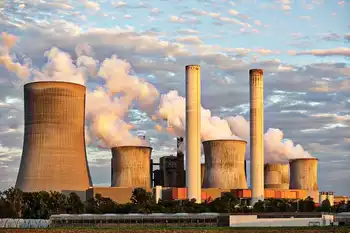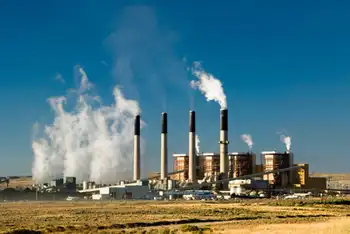Sheffield building heavy nuclear components
By Industrial Info Resources
NFPA 70e Training
Our customized live online or in‑person group training can be delivered to your staff at your location.

- Live Online
- 6 hours Instructor-led
- Group Training Available
They are both in Sheffield , South Yorkshire, a region that has a history in heavy engineering and steelmaking that stretches back more than 250 years.
To finance a 15,000-ton press that is to be used in the manufacture of ultra-large nuclear components, including the production and finishing of the largest reactor-pressure vessels, Sheffield Forgemasters International Limited (SFIL), has been granted a $122 million loan from the SIF, which forms the major part of the $210 million investment needed for the press. Reactor manufacturer Westinghouse Electric LLC, which is owned by Toshiba Corporation, and Lloyds Banking Group also have contributed funding for the project.
The demand for heavy forgings is forecast to triple by 2020 to 70,000 tons, with worldwide supply capacity only able to fulfill 59,000 tons in that period. A 2009 report by Frost & Sullivan highlighted the disparity between supply and demand. The main downside of an increase in nuclear projects concerned the availability of heavy equipment and long lead times. The majority of equipment for new generation plants currently comes from international suppliers and nuclear-related entities which are working at full capacity, said the report.
Graham Honeyman, the chief executive officer of SFIL, said that the government loan formed the final piece of a two-year project to finance the installation of the 15,000-ton forging press, which would place the United Kingdom at the peak of a global supply chain for civil nuclear manufacturing.
"The world's capability to make large and ultra-large forgings for the nuclear industry is currently restricted to the equivalent of five to seven reactor supply systems a year. However, the average nuclear construction rate between 2010 and 2030 is expected to be 13 new reactors a year," Honeyman said.
SFIL is supplying many components to the civil nuclear and defense industries in the UK, as the only company carrying the ASME certification. The company already has made main pump castings for a Westinghouse reactor in China. The "N Stamp" is the nuclear accreditation of the American Society of Mechanical Engineers.
The company will be able to produce the largest forgings within three years from the new press. By the end of 2017 a new Areva S.A. EPR reactor is planned to be in operation, and with three more following at 18- to 24-month intervals, these first units of the new build program could be supplied by SFIL. The Nuclear Industry Association reports that UK companies could supply about 50% of the components for the new build program, which could reach 70% with the right investments, such as the new press.
Globally, there a few companies with SFIL's type of capability. These include Japan Steel Works, South Korea's Doosan Heavy Industries and China's First Heavy Industries. Doosan and Russia's OMZ Izahora are both planning to install new, large presses from 2012 onwards. India's state-owned Bharat Heavy Electricals Limited (BHEL) has a trade agreement with SFIL to oversee the development of power generation forgings, and Larsen & Toubro is setting up forging capability. Shanghai Electric is also planning to enter the heavy forgings arena in which SPIL claims to have the lead and accreditation.
DavyMarkham, with a 180-year history in the industry, has the ability to manufacture high-precision heavy engineering products and can move components of up to 350 tons at its Sheffield plant. It has a heritage in the design, manufacture and assembly of large equipment for the mining, power generation, oil, gas, power and uranium, and nuclear sectors. It has become the first company to join the second membership tier of NAMRC to prepare to take part in the new reactor build in the UK.
The NAMRC is a collaborative initiative between industry and the universities of Sheffield and Manchester and is to be based at a new all-purpose facility in South Yorkshire that is due for completion in 2011. The two-tier membership structure of the NAMRC reflects the position of the member companies in the supply chain. Founding Tier One industrial partners include Rolls-Royce and SFIL, and reactor builders Areva and Westinghouse.
On March 1 this year, DavyMarkham was acquired by India's Hindustan Dorr-Oliver, a subsidiary of IVRCL Infrastructure and Projects, which is one of the country's leading infrastructure companies and includes Nuclear Power Corporation of India. HDO has announced its intention of moving into the nuclear power plant sector.











